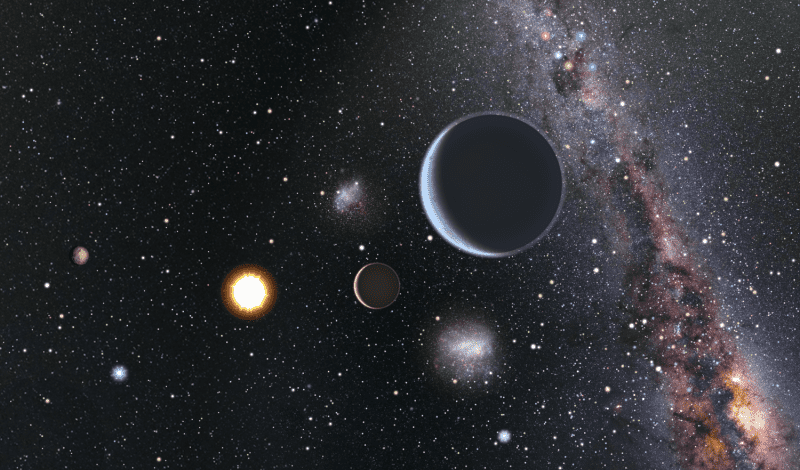Using three state of the art ground-based telescopes, a team of astronomers has identified three super-Earth exoplanets seven to eight times as massive as our own planet and orbit their parent star closer than Mercury orbits the sun. What’s hot about the findings – apart from the planet’s likely scorching surface – is that these were made using a novel automated approach, in which one telescope called the Automated Planet Finder (APF) Telescope at Lick Observatory in California was programmed to scour the night’s sky and look for signs of nearby alien planets. These three planets are just the beginning of a new process that will hopefully return hundreds of planets in our neighborhood, all without the need for human supervision.

To find the new planets, scientists at UC Berkeley detected the wobble of the star HD 7924 as the planets orbited and pulled on the star gravitationally. APF and Keck Observatory in Hawaii traced out the planets’ orbits around the over many years using the Doppler technique that has successfully found hundreds of mostly larger planets orbiting nearby stars. APT made crucial measurements of the brightness of HD 7924 to assure the validity of the planet discoveries.
Most of the planets discovered outside our solar system are about the size of Neptune or bigger most of which are called Hot Jupiters since they’re similar in size to Jupiter (several hundred times the mass of Earth) and usually orbit a very hot star. If we’re to find life on other planets or find one that’s hospitable enough to cater for life (why not bring ourselves in…), the best chance we have according to researchers is to look for those planets that are similar to Earth in terms of mass, density and orbit around the parent star. Of course, these aren’t mandatory conditions – it’s just that this is a proven system we’ve confirmed right in our backyard. Preferably, you also want to track planets that are located nearby, say in the 100-light-years range. This is where the APF comes in.
Tracing planets in the nightsky can be very difficult, tiresome and prone to error. It took many years to train the computers to run the observations by themselves, but we’re finally seeing the first results. Next, this proven system will be used for a pilot two-year search with the APF.
“This level of automation is a game-changer in astronomy,” said Andrew Howard, a professor of astronomy at the University of Hawaii. “It’s a bit like owning a driverless car that goes planet-shopping.”
“When the survey is complete we will have a census of small planets orbiting sun-like stars within approximately 100 light-years of Earth,” says University of Hawaii at Manoa graduate student Benjamin “BJ” Fulton.
“We initially used APF like a regular telescope, staying up all night searching star to star. But the idea of letting a computer take the graveyard shift was more appealing after months of little sleep. So we wrote software to replace ourselves with a robot,” BJ continued.
Findings appeared in the Astrophysical Journal.






